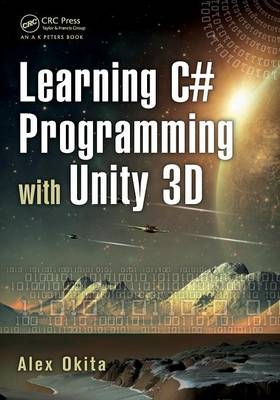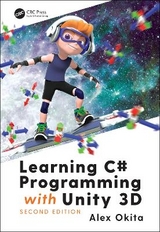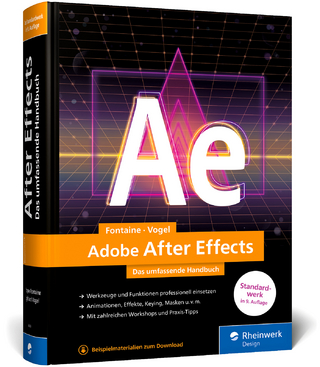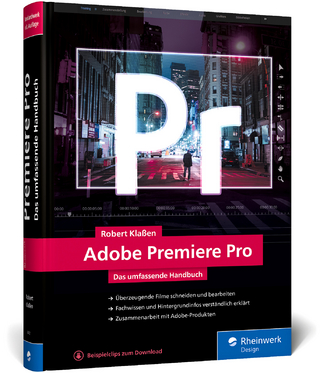
Learning C# Programming with Unity 3D
A K Peters (Verlag)
978-1-4665-8652-9 (ISBN)
- Titel erscheint in neuer Auflage
- Artikel merken
Writing a massive multiplayer online role-playing game is quite hard, of course, but learning how to write a simple behavior isn’t. Like drawing, you start off with the basics such as spheres and cubes. After plenty of practice, you’ll be able to create a real work of art. This applies to writing code—you start off with basic calculations, then move on to the logic that drives a complex game. By the end of this book, you will have the skills to be a capable programmer, or at least know what is involved with how to read and write code.
Although you could go online and find videos and tutorials, there is a distinct advantage when it comes to learning things in order and in one place. Most online tutorials for C# are scattered, disordered, and incohesive. It’s difficult to find a good starting point, and even more difficult to find a continuous list of tutorials to bring you to any clear understanding of the C# programming language. This book not only gives you a strong foundation, but puts you on the path to game development.
Introduction
Why read a book
Do I need to know math?
Programming as a form of expression
Games as a stage with lights
Personal Information
A Brief History of Computer Programming
Mechanical Computers
Logic
Computer Science
Software
Modern Computer Language
The Future of Computer Languages
What is C#?
C# Paradigm
What is Unity3D?
Why Use Unity3D to Learn?
How does Unity3D use C#?
What Is Programming
What Does C# Look Like
Learning to copy and paste
Compiling
What We've Learned
Leveling Up
Before You Begin
What Will Be Covered in This Chapter
Getting Started: Downloading and Installing
Getting Started: Unity3D Overview
The Main Window
Creating a New Project
A New Unity Project
Summary
Getting Started: Sample Code
Code Fragments
Are errors bad?
Following along
Summary
Getting Started: Working with C#
Getting Project Files
Creating and Assigning a New C# File
Naming Your New File
Getting Started: Using Your New File
Unity Tools
Running Live Code
Saving a Scene
Opening a Scene
Summary
What We’ve Learned
Leveling Up
First Steps
What will be covered in this chapter
Review
First Steps: Tokens
Tokens
Separator Tokens
Operator Tokens
Other Operator Tokens
Literals
Transitive and Non-Transitive Operations
Putting It All Together
What We’ve Learned
First Steps: Statements and Expressions
Expressions
How Code is Executed
Thinking in Algorithms
What We’ve Learned
First Steps: Keywords
Class
What we’ve learned
First Steps: Whitespace
Pick a Flavor
What We’ve Learned
First Steps: Code Blocks
What We’ve Learned
First Steps: Classes
Objects
What We’ve Learned
First Steps: Variables
Identifiers
Data Noun: Collected Facts and Statistics Collected for Analysis
Declaring a Variable
Dynamic Initialization
What We’ve Learned
First Steps: Variable Names
Variable Assignment
Putting It Together
What We’ve Learned
First Steps: Types, a first look
Value and Reference Types
What We’ve Learned
First Steps: Strong Typing
Dynamic Typing
What We’ve Learned
First Steps: Type Casting, Numbers
Explicit vs. Implicit Casting
A Basic Example
What We’ve Learned
First Steps: Comments
Line Numbers
Code folding
Summary Comments
Navigating in Code
What We’ve learned
Leveling Up
Basics
What Will Be Covered in This Chapter
Review
Basics: Building Up a Game Idea
Design from Experience
Primary Activity
Moment to Moment
Actions to Functions
Compromise
Starting with Controls
What We’ve Learned
Basics: Creating a Class
Class Declaration
Adding Data Fields
Access Modifiers and the Dot Operator
Class Scope
Class Members
What We’ve Learned
Basics: Directives
Libraries
Ambiguous NameSpaces
What We’ve Learned
Basics: Functions
What are Functions
Unity Entry Points
Writing a Function
More on White Space, Tabs
What We’ve Learned
Basics: Order of Operation
What we've learned
Basics: Scope, a First Look
Class Scope
Function Scope
What We’ve Learned
Basics: This
A Basic Example
When This is Necessary
Awkward Names
What We’ve Learned
Basics: Turning Ideas into Code Part 1
Mouse Input
GameObject
What we’ve learned
Basics: Logic and Operators
Booleans
Equality Operators
If and Branching
Flow Charts
Relational Operators
Rearranging Logic
Another look at Scope
What we’ve learned
Basics: Loops
Unary Operators
While
For
Do While
Postfix and Prefix Notation
Using Loops
Loops within Loops
Runaway Loops
Breakpoints, a First Look
What We’ve Learned
Basics: Scope, Again
Visibility or Accessibility
A Basic Example
Global Scope
What We’ve Learned
Basics: Warnings vs Errors
Warnings
Errors
Understanding the debugger
What we’ve learned
Leveling Up
Style Guides
Fundamentals
What Will Be Covered in This Chapter
Review
Fundamentals: Inheritance, A First Look
Class members
Instancing
Parent and Child
Object
! = null
What We’ve Learned
Fundamentals: Instancing
Class Initialization
New
Constructors
What We’ve Learned
Fundamentals: Static
Static Variables
Static Functions
Putting it all together
What we’ve learned
Fundamentals: Turning Ideas into Code Part 2
Input Manager
What We’ve Learned
Fundamentals: Jump Statements:
Fundamentals: Jump Statements: Return 440
A Basic Example
Returning Objects
A Class is a Type
Null is Not Void
What We’ve Learned
Fundamentals: Operators, conditions
Conditional Operators && and ||
What We’ve Learned
Fundamentals: Arrays, a First Look
Fixed size Arrays
Foreach
Dynamically Initialization
While with Arrays
What we’ve learned
Fundamentals: Jump Statements: Break and Continue
A Basic Example
ZombieData
Foreach, again
What We’ve Learned
Fundamentals: Multi Dimensional Arrays
Colums and Rows
A Basic Example
A Puzzle Board
Checking Range
What We’ve Learned
Fundamentals: Array List
A basic example
ArrayList Contains
Remove
Sort and Reverse
What We’ve Learned
Fundamentals: Strings
Declaring a String
Escape Sequences
Verbatim Strings @
String Format
What We’ve Learned
Fundamentals: Combining what we’ve learned
Timers
Adding in Classes
What We’ve Learned
Fundamentals: Source Version Control
Modern Version Control
The Repository
Github
What We’ve Learned
Project Files
Setting up a Repository
Push
Gitignore
Pull
Contributors
What we’ve learned
Leveling Up
Intermediate
What Will Be Covered in This Chapter
Review
Intermediate: Pseudo Code
Thinking It Through
Class Members
Functions Return
Arguments aka "Args" (Not related to pirates)
Assignment Operators
What We’ve Learned
Intermediate: Class Constructors
A Basic Example
What We Learned
What We’ve Learned
Intermediate: Arrays, revisited
Using Arrays in Unity
Instancing with AddComponent();
Type Casting Unity Objects
What We’ve Learned
Intermediate: Enums
Using Enums
Combining what we’ve learned
What we’ve learned
Intermediate: Switch
A basic example
Default:
What We’ve Learned
Fall Through
Goto Case
Limitations
What We’ve Learned
Intermediate: Structs a.k.a. Structures
Structs 636
Struct vs. Class
Without Structs
Handling Structs
Accessing Structs
Global Access
What We’ve Learned
Intermediate: Class data
Character base class
Const
Readonly
What We’ve Learned
Intermediate: Namespaces
A Basic Example
Directives in Namespaces
Ambiguous References
Alias Directives
Putting Namespaces to Work
Extending Namespaces
What We’ve Learned
Intermediate: Functions again
Parameter Lists
Side Effects
Multiple Arguments
Useful Parameters
Foreach vs For
What We’ve Learned
Intermediate: Unity Execution order
A Basic Example
Component Execution Order
What We’ve Learned
Intermediate: Inheritance, Again
Function Overrides
A Basic Example
Class Inheritance
Object
What We’ve Learned
Intermediate: Type Casting, again
(≤Type≥) versus `as’
User-Defined Type Conversion
Implicit versus Explicit Type Conversion
Break;
What We’ve Learned
Intermediate: Working with Vectors
Vectors are Objects
Stepping through Monster Generator
Gizmos
A Basic Example
Using Gizmos
Optimizing
What We’ve Learned
Intermediate: Goto Labels
A Basic example
Zombie State Machine
This as a Reference to Yourself
HumanState based on ZombieState
The Is keyword
What have we learned
Intermediate: More on Arrays
Length and Count
Foreach, a Reminder
Discovery
Putting It Together
What We’ve Learned
Intermediate: Out Parameter
A Basic Example
Simple Sort (Bubble Sort)
Simple Sort Proof
What We’ve Learned
Intermediate: Ref Parameter
A Basic Example
Code portability Side Effects
What we’ve learned
Intermediate: Type Casting Numbers
Number Types
Integers
Floating Point
What We’ve Learned
Intermediate: Types and Operators
GetType()
More typecasting
Type Aliasing
Boxing and Unboxing
Intermediate: Operator Overloading
A Basic Example
Overloading *
Overloading ≤
What we’ve learned
Intermediate: Controlling Inheritance
Sealed 838
A Basic Example
Abstract
A Basic Example
Abstract : Abstract
Putting this to use
What we’ve learned
Leveling Up
Advanced
What Will Be Covered in This Chapter
Review
Moving forward
Advanced: Mono Develop
Find in Files
Word processors
Mono History
Advanced: Function Overloading
A closer look at functions
Function Signature
Different Signatures
Putting It Together
Not Quite Recursion
Drawword
What We’ve Learned
Advanced: Accessors a.k.a. Properties
value
A Basic Example
Set Event
Read Only Accessor
Simplification
What We’ve Learned
Advanced: Base Classes Another Look
Generalization – Base Classes
Specialization
Base
Partial
Protected Private and Public
What We’ve Learned
Advanced: Optional parameters
Using Optionals
Optional Arguments
Named Parameters
Combining What We’ve Learned
What We’ve Learned
Advanced: Delegate Functions
Delegates
Delegate Signatures
Stacking Delegates
Using Delegates
What We’ve Learned
Advanced: Interface
Early Planning
Interface Methods
Multiple Interfaces
IComparer
Using IComparer
What We’ve Learned
Advanced: Class Constructors Revisited
A Basic Example
When to Create a New Class
Static Functions
What We’ve Learned
Advanced: Preprocessor Directives
A Basic Example
UNITY_EDITOR
Warning
Organizing
What We’ve Learned
Advanced: Exceptions
A Basic Example
Exception Messages
Custom Exceptions
Finally
Try Catch Finally in Use
What We’ve Learned
Advanced: IEnumerator
IEnumerator
Implementing IEnumerator
What We’ve Learned
Advanced: Generics
Generic Functions
Making Use of Generic Functions
Generic Types
Var
Multiple Generic Values
What We’ve Learned
Advanced: Events
A Basic Example
A proper event
EventArgs
Update() to Event
Generic EventArg
What We’ve Learned
Advanced: Unity Friendly Classes
Extensions
A Basic Example
Inheriting from Object
OnUpdate
What We’ve learned
Advanced: Destructors
A Basic example
Clearing out objects
What we’ve learned
Advanced: Concurrency or Co-Routines
Yield 1088
A Basic Example
Setting Up Timers
Random Decisions with Logic
Stopping a Coroutine
What We’ve Learned
Advanced: Dictionary Stacks and Queues
A Basic Example
ContainsKey
Stacks
A Basic Example
Queues
What We’ve Learned
Advanced: Callbacks
A Basic Example
Dynamic Callback Assignment
WWW
What We’ve Learned
Advanced: Lambda Expressions
Anonymous Expressions
A Lambda Expressions
A Basic Example
When lambdas are Useful
Lambda Statements
What We’ve Learned
Leveling up
Extended
Extended: What we’ll be covering in this chapter
Extended: Review
Extended: Readability Optimizations and Idioms
?:
if
Smell
What We’ve Learned
Extended: Source Control Revisited
Diff and Merge
KDiff3
Avoiding Conflicts
What We’ve Learned
Extended: Debugging
Debugging Accessors
Locals
Call Stack
Watching List
What We’ve Learned
Extended: Recursion
A Basic Example
Understanding Recursion
In practice
Recursion Types
What We’ve Learned
Extended: Reflection
A Basic Example
Reflection MethodInfo
What We’ve Learned
Extended: LINQ
Lambdas and Arrays 1205
var
LINQ from
Strange behaviors in LINQ
Greedy Operator
What we’ve learned
Extended: Bitwise Operators
Big endian and Little Endian
Signed or Unsigned
Bitwise or |
Enums and Numbers
Bitwise and &
Bitwise Exclusive or ^ (xor)
Setting Bitwise Flags
Bitwise Shortcuts | = and ^ =
Bits in Numbers
Bit Shifting ≥≥ and ≤≤
What We’ve Learned
Extended: Bitwise Math
Twos Complement
Unary Operator ~
Bitwise Addition and Subtraction
Bitwise Multiplication
Bitwise Tricks
What We’ve Learned
Extended: Attributes
A Basic Example
Custom Attributes
Finding Custom Attributes
Attribute Constructor
Multiple Attributes
Putting Attributes to Work
Attribute flags
What We’ve Learned
Extended: Architectures and Organization
Planning Structure
Fixing Namespaces
Namespace and Directory Structure
Using Partial
Refactoring
What We’ve Learned
Extended: Design Patterns
Creational Design Patterns
Structural Design Patterns
Behavioral Design Patterns
What We’ve Learned
Extended: Continuing on Your Own
Stuff We Couldn’t Cover
Extern and unsafe
Dynamic
Dynamic vs Var
| Zusatzinfo | 11/2015 INKJET reprint; 421 Illustrations, black and white |
|---|---|
| Verlagsort | Natick |
| Sprache | englisch |
| Maße | 178 x 254 mm |
| Gewicht | 1225 g |
| Themenwelt | Informatik ► Grafik / Design ► Film- / Video-Bearbeitung |
| Informatik ► Software Entwicklung ► Objektorientierung | |
| Informatik ► Software Entwicklung ► Spieleprogrammierung | |
| ISBN-10 | 1-4665-8652-4 / 1466586524 |
| ISBN-13 | 978-1-4665-8652-9 / 9781466586529 |
| Zustand | Neuware |
| Informationen gemäß Produktsicherheitsverordnung (GPSR) | |
| Haben Sie eine Frage zum Produkt? |
aus dem Bereich



